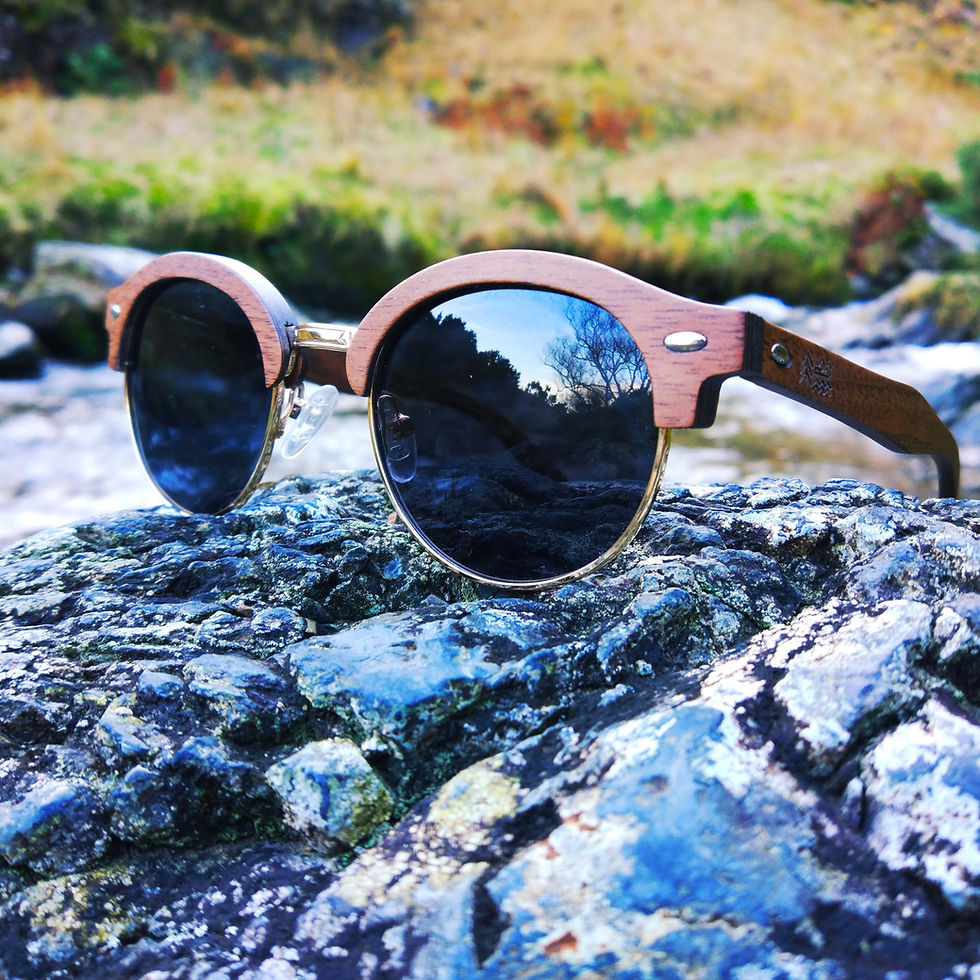Why polarised wooden sunglasses are perfect for winter
- Wooden Waves
- Jan 13, 2021
- 2 min read
Updated: Jan 20, 2023
Anyone from the UK reading this will be chuckling away to themselves thinking... "Sunglasses in winter! HA!" as the wintery nights descend into darkness at four in the afternoon.
But the truth is, a perfect wintery day of blue sky's and sunshine can create the ideal conditions to leave you longing for that pair of shades you wish you'd packed. Especially if you're lucky enough to have your surroundings dusted by a beautiful but incredibly reflective layer of snow.
The problem is, this alluring and highly reflective layer of frozen water causes light to be reflected in a multitude of directions causing something called 'glare', which not all sunglasses are equipped to deal with.
You see, the way sunglasses protect your eyes from being damaged by exposure to bright light is by filtering out the harmful UVA and UVB rays. This is fine for making your surroundings seem darker and protecting your eyes from being damaged by the sun, but it doesn't always help you to see better in bright conditions. That's where polarised sunglasses come in.
When light hits a reflective surface such as water, ice, snow or even metallic objects like cars, the light is either absorbed or reflected. The reflected light bounces off the surface, scattered in all different directions meaning that some of the light is travelling as a horizontal or diagonal wave while other light is travelling as a vertical wave. This effect is known as polarisation.
The way polarised sunglasses tackle this problem is by filtering light travelling as a vertical wave only, while reflecting light travelling as a horizontal or diagonal wave. This causes the 'glare' to appear reduced allowing better visibility in bright conditions.

Left = Sunglasses that do not have polarised lenses causing reflective glare.
Right = Sunglasses that do have polarised lenses. Reflective glare disappears allowing for better visibility and much higher clarity. More on Wooden Waves sunglasses lenses HERE.
So there you have it!
Winter might seem like a dark and dismal time of the year, but in actual fact, it creates some of the most dangerous and risky conditions for the human eyes. The sun being at its lowest point in the sky coupled with shiny, wet surroundings creates the ideal conditions to be dazzled by the polarisation effect and reflective 'glare'.
Now you know how polarised sunglasses work, you can see how they might be useful in bright, wet and even snowy conditions. Check out our range of polarised wooden sunglasses by clicking HERE!



Comments